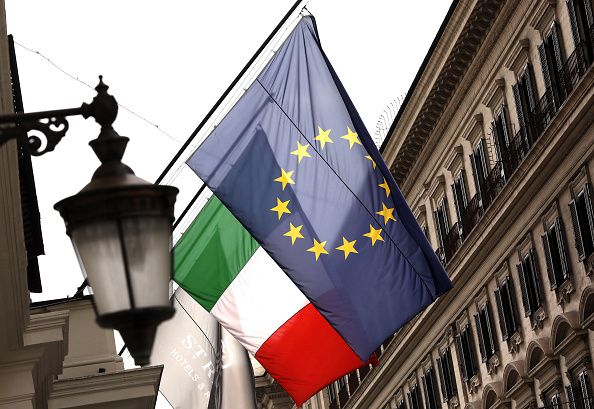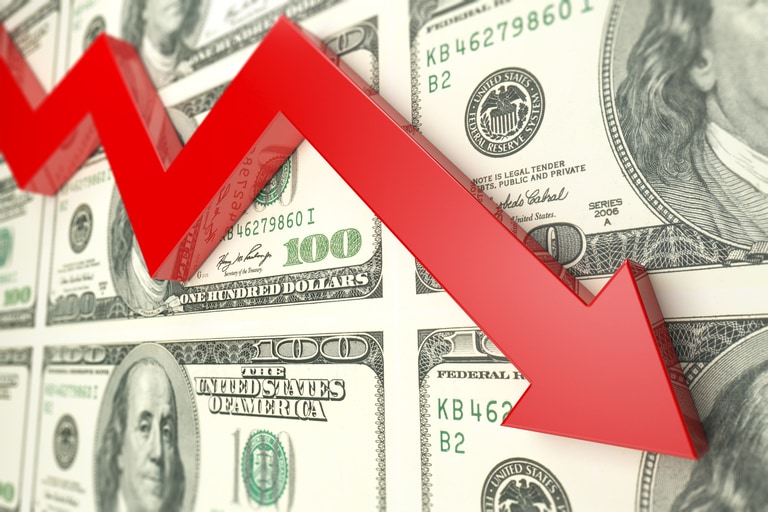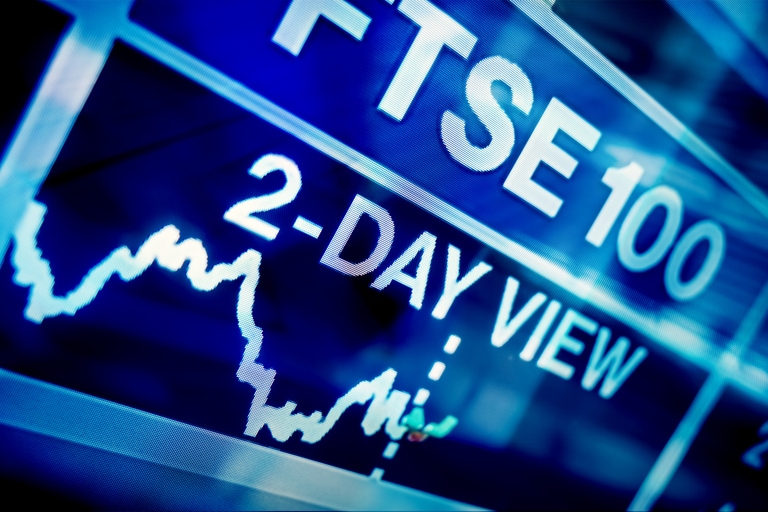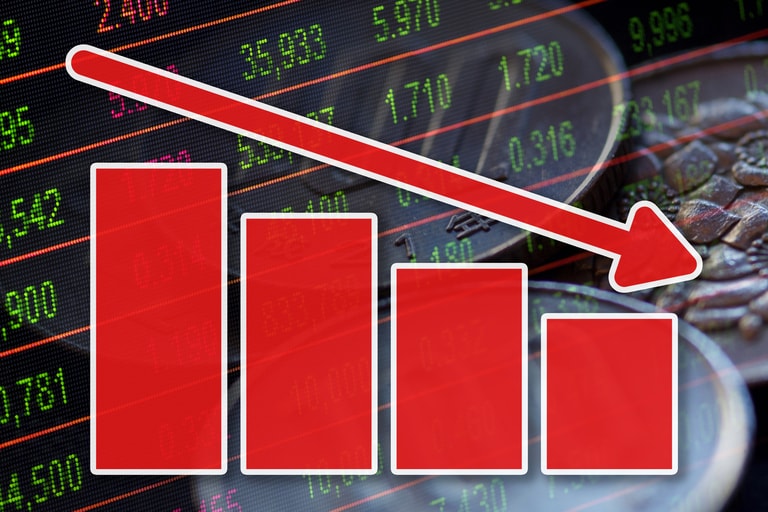European markets have slipped back sharply today on a combination of rising political risk in the euro area as the Italian government teeters on the brink of collapse, and the EU Commission cut its GDP forecasts for 2022, to 2.6%, while upgrading its average inflation prediction for the year to 7.6%.
Europe
On a backdrop of surging inflation, and rising recession risk, these GDP estimates still come across as optimistic given the challenges facing the EU’s biggest economy Germany and the possibility Russia could cut gas supply as we towards the end of the year. For 2023 the picture was little better, downgrading GDP to 1.4% from 2.3%.
The sell-off on the FTSEMib has led European markets lower and comes amidst growing concern that any attempt by the ECB to tighten monetary policy could have significantly negative effects on Italian bond yields. Investors will be looking for more detail on how the ECB intends to deal with that at next week’s rate meeting, as the euro finally slips conclusively below parity.
We’ve also seen further weakness in commodity prices as markets start to price in a double whammy of slowing growth and higher interest rates.
This is being felt in basic resources and energy as both copper and oil prices slide sharply, dragging the FTSE100 back towards last week’s lows, led by the likes of Anglo American, Rio Tinto and Glencore.
UK house builders also can’t catch a break, despite sales numbers which still look quite robust across the sector, with investors apparently concerned about the sustainability of margins as well as sales at a time when interest rates look set to rise sharply and house price growth could slow sharply.
The sector has been one of the worst performers on the FTSE100 this year, down almost 40% year to date. Today’s full year trading update from Barratt Developments while positive has seen the shares slide back, despite adjusted profit before tax expected to come in ahead of forecasts between £1.05 and £1.06bn.
Total home completions have returned to pre-pandemic levels with 17,908 this year, an increase on 2021’s 17,243. For the next fiscal year Barratt says it expects to grow total home completions by between 3% to 5%, with forward sales of 13,579 homes worth a total of £3.62bn.
Utility provider Severn Trent on the other hand has seen its shares edge higher has reported a steady start to the year, reiterating that it expects to see at least £50m in customer ODI outperformance payments in FY23. These (Outcome Delivery Incentives) are measures used by Ofwat to determine whether utility companies are meeting their commitments to customers, and are measured against supply interruptions, internal sewer flooding and pollution.
One area doing well despite the challenges facing the economy is recruitment, however even here, share prices are struggling. Hays latest Q4 numbers showed strong growth in all of its markets at the end of its fiscal year, and yet the shares are down over 15% year to date. Fee income showed a rise of 24% across all its regions with a 27% rise in Germany, while permanent positions saw a return of 34% by segment. The ANZ region saw the weakest growth. Group operating profit for the year is expected to come in at the top end of expectations at circa £210m.
Dr. Martens has also reported it is trading in line with expectations, reiterating its half year and full year guidance.
US
US markets have opened lower, after US bank JPMorgan Chase and Morgan Stanley posted Q2 numbers that showed up worrying signs of stress starting to build in the US economy, as both missed expectations on revenues and profits.
US PPI for June also came in hotter than expected rising sharply to 11.3%, but in a repetition of yesterday, core prices slipped back from 8.3% to 8.2%.
It is now becoming clear that while core prices are cooling, the area which most affects consumers, namely food and energy, is starting to cause real pain, and will increase the pressure for central banks to act more aggressively, less higher inflation expectations become embedded.
With US markets today we could finally be seeing where the rubber hits the road as to whether investors start to revise lower their expectations for earnings outlooks over the next couple of quarters.
Today’s weakness in the share price of US banks, has seen JPMorgan share price drop to its lowest levels since November 2020, along with Citigroup and Bank of America.
On the numbers themselves, JPMorgan Chase saw Q2 revenues of $31.63bn, below expectations of $31.97bn, while profits also fell short at $2.76c a share, with the bank announcing the temporary suspension of its buyback program, sending the shares sharply lower.
The bank said that in suspending the buyback it would look to bolster its capital position to meet the higher requirements from recent stress tests. This surprise move suggests that the bank has considerable concerns about the effects that higher rates and the upcoming slowdown is likely to have on its balance sheet.
JPMorgan set aside another $1.1bn in respect of provision for credit losses, on top of the $1.5bn we saw in Q1, even as credit and debit card spending rose by 15% during the quarter. The fact that less than a year after returning capital to shareholders from loan loss reserves, the bank is now rebuilding those reserves, should be a cause for concern as to how it sees the rest of the year playing out.
Loans in Q2 rose by $1.1trn, which was more than expected while its was notable that Q2 FICC sales and trading revenue came in short at $4.71bn.
Investment banking revenue was also lower than expected, for the second quarter in a row, with a sharp drop off in fees due to lower M&A and other advisory activity.
Morgan Stanley’s Q2 numbers have also disappointed with net revenue falling short at $13.1bn, below expectations of $13.33bn, while profits came in at $1.44c a share, below forecasts of $1.56c a share.
Investment banking saw a big revenue drop from a year ago, dropping from $2.37bn to just over $1.07bn, due to sharp declines in advisory fees, however fixed income was better, rising to $2.5bn. Wealth management saw net revenues decline to $5.7bn just missing forecasts of $5.8bn. The bank also set aside $200m in relation to regulatory investigations into messaging apps use.
We’ve also seen similar weakness in the likes of Citigroup, who report tomorrow and Bank of America and Goldman Sachs who report next weakness.
Under pressure streaming service Netflix has signed a deal with Microsoft to introduce a new low-cost service with advertising breaks as it tries to prevent further erosion in its subscriber base, after reporting a surprise fall in subscriber numbers in Q1. With the company set to report its Q2 numbers next week a positive catalyst can’t come soon enough, however it’s not immediately obvious how an ad-based model would work when there are other ad based models out there that are free, like Freevee, previously IMDB TV.
FX
The US dollar has continued to sweep all before it, with the US dollar index hitting a new 20 year high, with the euro pushing conclusively below parity and down towards 0.9900, as US short term rates continue to surge, with the US 2-year yield well above US 5-year, 10 year and 30-year yields.
The Bank of Canada may have gone all gangbusters on hiking rates yesterday by 100bps, but it’s not really helped it that much given that it’s caused the markets to reprice the likelihood that the Federal Reserve will follow suit when it meets later this month. The continued weakness in oil prices appears to be acting as a drag as the CAD pushes to its lowest levels since November 2020.
The Australian dollar is also lower against the US dollar even after unemployment fell from 3.9% to 3.5% in June, and a 50-year low. 88k new jobs were added, with high vacancy rates a theme across all Australian states as well as globally.
Against the Japanese yen the US dollar continues to move higher with the 140.00 level moving into view with the prospect we could see further gains towards 145.00, while the euro has finally slipped below parity
Commodities
Increasing concerns over the effects of high inflation will have on demand, along with a strong US dollar has continued to act as a drag on oil prices, sending brent prices below $100 a barrel and to their lowest levels since February, but more importantly from a technical point of view, below their 200-day MA for the first time since December 2021.
The rising probability that the Federal Reserve could pull the trigger on a 100bps rate move this month has put further downward pressure on gold prices, pushing the yellow metal to 18-month lows yesterday, with the prospect of further losses to come.
Copper prices have also continued to fall as a combination of a strong US dollar and rising recession risk hammers prices to their lowest levels since November 2020.
CMC Markets erbjuder sin tjänst som ”execution only”. Detta material (antingen uttryckt eller inte) är endast för allmän information och tar inte hänsyn till dina personliga omständigheter eller mål. Ingenting i detta material är (eller bör anses vara) finansiella, investeringar eller andra råd som beroende bör läggas på. Inget yttrande i materialet utgör en rekommendation från CMC Markets eller författaren om en viss investering, säkerhet, transaktion eller investeringsstrategi. Detta innehåll har inte skapats i enlighet med de regler som finns för oberoende investeringsrådgivning. Även om vi inte uttryckligen hindras från att handla innan vi har tillhandhållit detta innehåll försöker vi inte dra nytta av det innan det sprids.






